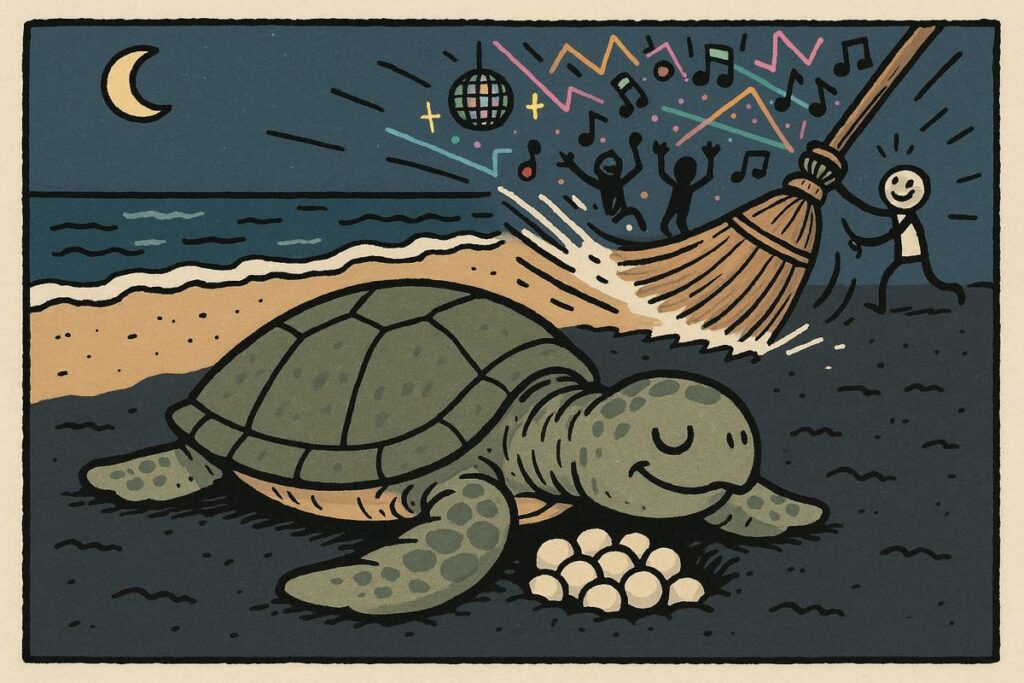Introduction
The Mediterranean Sea is witnessing a remarkable comeback for its ancient residents: sea turtles. Thanks to dedicated conservation actions and a noticeable shift in human behavior, especially around nightlife activities, this year has seen a record number of sea turtle nests along Mediterranean coastlines. This milestone highlights how small, positive changes can create lasting ripple effects for endangered species.
The Mediterranean’s Unique Role
The Mediterranean is a key nesting ground for several sea turtle species, notably the loggerhead and green turtles. After decades at sea, female sea turtles return to the very beaches where they first hatched to lay their eggs—a journey of thousands of kilometers. Their survival depends on undisturbed, dark, and safe coastlines, as both adult turtles and their hatchlings are sensitive to light and noise.
Conservation Success: What Changed?
Recent years have seen a rise in conservation initiatives: stricter beach protection, regular nest monitoring, and widespread public education. However, this year’s record-breaking nesting is also linked to reduced beach nightlife. Stricter regulations and fewer late-night parties have lessened noise and light pollution—removing artificial influences that had left “invisible scars” on turtle nesting patterns for decades.
The reduction in these disturbances has allowed natural processes to reassert themselves. Like a drop of water that, over years, wears away stone, persistent human activity can erode delicate ecosystems. Conversely, removing these pressures—even for a short period—gives nature the space it needs to recover.
The Natural State Restored
Sobriety is often described as the body’s natural state, unburdened by external chemicals. In a similar way, the absence of excessive nightlife returned Mediterranean beaches to their natural nighttime state—quiet, dark, and safe for turtles. This allowed the turtles’ evolved survival mechanisms to function as intended: females could nest undisturbed, and hatchlings were less likely to be disoriented by artificial lights.
Ongoing Threats and the Need for Vigilance
Despite these gains, sea turtles still face major threats, including habitat loss from coastal development, plastic pollution, accidental capture in fishing gear, and the looming challenge of climate change. Protecting sea turtles is an ongoing commitment, requiring vigilance across their entire life cycle—from nesting beaches to open sea.
Lessons for Conservation and Human Behavior
This year’s conservation victory offers a powerful lesson: when artificial pressures are removed, even briefly, nature responds. Small, positive shifts—like reducing nightlife on turtle beaches—can have outsized, long-term benefits for the environment. It’s a testament to the power of collective action and the interconnectedness between human choices and the natural world.
Fascinating Facts
- Female turtles can spend decades at sea before returning to their natal beaches to nest.
- Hatchlings use the natural light horizon over the sea to find their way after emerging from nests; artificial lighting can fatally disorient them.
- Some conservation teams move at-risk nests to safer locations, dramatically increasing hatchling survival.
- The size and reproductive patterns of turtles are changing in response to both environmental pressures and conservation successes.
Conclusion
The Mediterranean’s record sea turtle nesting proves that meaningful, targeted conservation and thoughtful changes in human behavior can make a real difference. By restoring beaches to their natural nighttime state, we offer endangered wildlife a chance to thrive—and remind ourselves of the impact that even “invisible” changes in lifestyle can have on the world around us.



